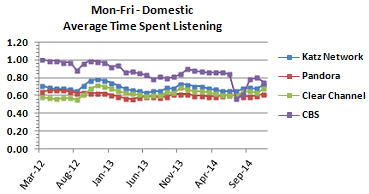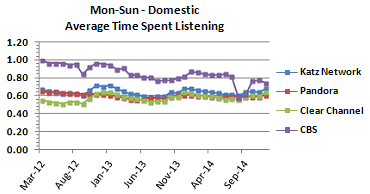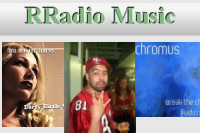![]()
|
TSL Dive is Threat to Online Radio There's not a great deal of information on the topic of Time Spent Listening (TSL) to internet radio. The recently released "Infinite Dial Study - 2015" by Edison Media Research and Triton Digital jointly gives guidance on a multitude of online radio data; session TSL is not mentioned, though one slide shows "Average time 'Weekly Online Radio Listeners' spend listening to Online Radio." (Go over this report for all its data.) The only place TSL for a listening session is shown publicly, regularly, is within the Triton Digital Webcast Metrics. Download December's report from Triton, or download a collated copy of its numbers from Audio Graphics. Either way, concentrate on that column or tab marked "Time Spent Listening."
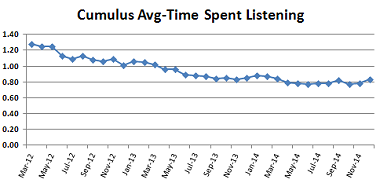 The questions to ask are: 1) Have we leveled off on TSL drop? 2) Was the lower TSL caused by consumer ADD or poor content? 3) If it's a trend, what is needed to reverse it? All require subjective answers. They are posed to make you think and nothing more. Online media players are improving the user experience. As tuning to another online station becomes easier for consumers, we are not likely to see a reversal in diminishing TSL without widespread change in the way online radio programming is presented - that is the point of many words written here. We are in a day when the audience can leave to seek info on the music you play, what's happening around town, or to chat with friends on social media - these are symptomatic of our digital age. Something needs to be done to make Time Spent Listening grow. Yet we hear no chatter on this topic, from any source. Creating "compelling content" is a thing of the past. There are so many definitions to those words that no one station is going to have a lock on everyone tuning in. Even Pandora's huge numbers are divided among tens-of-thousands of personalized stations. The following chart reflects TSL for all of Triton Digital's Webcast Metrics, from the December 2014 report. Month-to-Month is fine. But look at all that red in the year-to-year and the December 2012-through-December 2014 columns. Are we doing enough to address online radio TSL erosion? 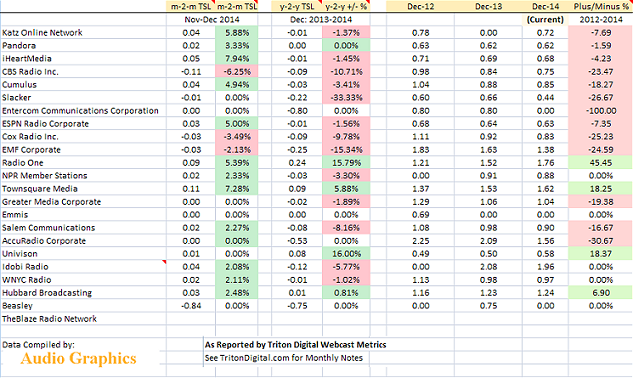 Tuesday, March 10, 2015  |
 |
 |
 |
comments by Disqus |




